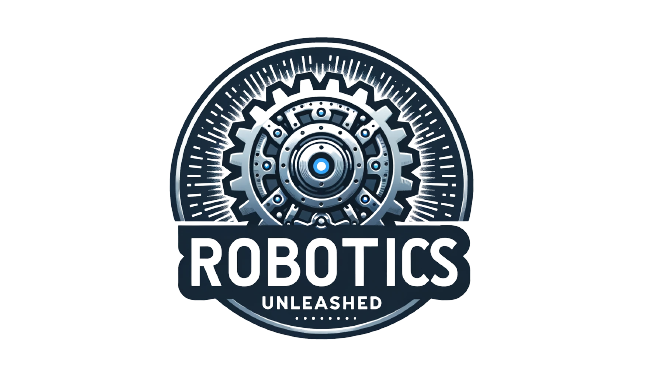The evolution of military robotics has fundamentally transformed defense strategies worldwide through the integration of advanced AI systems that enable autonomous operations and enhanced battlefield coordination. These technological innovations are reshaping warfare by improving decision-making capabilities, reducing human casualties, and creating new paradigms for military engagement across land, sea, and air domains.
Key Takeaways
- The global military robotics sector is valued at $24.37 billion in 2025, with projected growth of 6.97% annually through 2033
- AI-coordinated drone swarms reduce reconnaissance time by 70% while improving target accuracy by 50%
- Modern military operations achieve 50:1 human-robot ratios in field operations, revolutionizing force deployment
- Ethical frameworks are emerging to address autonomous lethal systems while balancing technological innovation
- The U.S. Replicator Initiative aims to deploy thousands of AI-enabled vehicles by 2026 amid global competition
The AI Revolution in Defense Systems
The integration of artificial intelligence into military robotics marks a strategic revolution in defense systems. This transformation goes beyond simple automation, creating systems capable of autonomous decision-making, enhanced battlefield efficiency, and significantly reduced human risk. The U.S. Army has committed $33 million to developing human-machine teams, highlighting the shift toward collaborative combat units where AI and human soldiers work in tandem.
The AI-powered drone market showcases this growth trajectory, with projections reaching $58.4 billion by 2030. These systems aren’t merely remote-controlled vehicles but increasingly sophisticated platforms with capabilities including autonomous threat assessment, precision targeting, and adaptive defense strategies.
Modern military forces are developing comprehensive ethical frameworks to govern these technologies, particularly concerning lethal autonomous systems. This focus on responsible deployment recognizes both the tactical advantages and moral complexities of AI-driven warfare systems.

Market Growth and Global Competition
The military robotics sector demonstrates remarkable market expansion, valued at $24.37 billion in 2025 and growing at a 6.97% compound annual growth rate through 2033, according to Global Market Insights. North America dominates this space, controlling 43% of the AI drone market, driven by substantial defense budget allocations.
The U.S. has allocated $1.99 trillion in its FY2024 defense budget, with significant portions directed toward autonomous unmanned vehicles and AI systems. The Replicator Initiative represents a cornerstone of this strategy, aiming to deploy thousands of AI-enabled autonomous vehicles by 2026.
International competition drives this expansion, with China’s People’s Liberation Army prioritizing what they term “intelligentized warfare” – focusing on AI-enhanced command systems and swarm robotics. Meanwhile, 85% of NATO military operations now deploy AI-powered drones, highlighting the widespread adoption of these technologies across allied forces.
Technological Breakthroughs in Autonomous Systems
The technological capabilities of military robotics have advanced dramatically, with swarm robotics leading these innovations. AI-coordinated drone swarms reduce reconnaissance time by 70% while improving target accuracy by 50%, according to SEO Sandwitch. These swarms operate as coordinated intelligent units rather than individual platforms.
Advanced combat systems like the Aegis Combat System demonstrate AI’s defensive applications, tracking over 100 targets simultaneously with precision that exceeds human capabilities. Meanwhile, the counter-drone technology sector is growing at 41% annually, developing systems to neutralize low-cost drone threats that might otherwise endanger multibillion-dollar military assets.
AI-driven predictive maintenance has reduced aircraft downtime by 25%, optimizing fleet readiness and operational efficiency. Systems like Lockheed Martin’s AI missile defense platforms use deep learning to enhance response times, creating more responsive and accurate defensive barriers.
Practical deployment evidence comes from the over 2,000 units of iRobot PackBot and Qinetiq Talon globally deployed for tasks including:
- Explosive ordnance disposal
- Hazardous material handling
- Reconnaissance in dangerous environments
- Building clearing operations
- Surveillance of contested areas
Battlefield Applications Across Military Domains
AI-powered military robotics have transformed operations across land, sea, and air domains. In surveillance and reconnaissance, AI drones achieve 90% situational awareness improvements and 88% wildfire prediction accuracy, providing critical intelligence while keeping personnel safely removed from danger zones.
Naval operations have especially benefited, with autonomous systems handling 92% of reconnaissance missions. This shift toward automated systems has enabled military operations to achieve 50:1 human-robot ratios in field deployments, fundamentally changing force structure and tactical approaches.
Beyond combat applications, AI delivers medical supplies 20% faster in conflict zones and can anticipate soldier health issues before they become critical. During disaster response operations, AI-powered search-and-rescue drones have reduced response times by 40%, saving both civilian and military lives.
The BAE-Microsoft partnership exemplifies the trend toward integrated systems, combining cloud computing with AI-powered robotics for enhanced battlefield management. Similarly, Raytheon’s advanced missile systems showcase AI’s growing role in electronic warfare, with adaptive countermeasures that respond to emerging threats in real-time.
Leading Military Robots Transforming Modern Warfare
Several key robotic platforms exemplify the current state of military robotics technology. The iRobot PackBot has achieved widespread deployment across NATO, being used in 85% of operations for bomb disposal and related tasks. Its versatility and proven reliability have made it a cornerstone of explosive ordnance disposal units.
For aerial reconnaissance, the Insitu ScanEagle portable UAV has become essential for naval operations, used in 92% of maritime reconnaissance missions according to Robohub. Its small size, long endurance, and sophisticated sensor package make it ideal for persistent surveillance without revealing naval positions.
The Qinetiq Talon demonstrates the trend toward modular design, available in configurations ranging from reconnaissance variants to the armed SWORDS (Special Weapons Observation Reconnaissance Detection System) platform. This adaptability allows a single base platform to fulfill multiple mission requirements.
Newer systems like Lockheed Martin’s Valkyrie AI-enabled stealth drone showcase the move toward higher autonomy in contested airspace, while counter-unmanned aerial vehicle (C-UAV) systems from MSI-DSL and Milrem Robotics represent the defensive response to growing drone threats through various interdiction methods including kinetic strikes.
Ethical Frameworks and Operational Challenges
The rapid adoption of military robotics has prompted important ethical considerations. While AI drones have demonstrated a 30% decrease in unintended casualties, according to SEO Sandwitch, questions remain about the appropriate limits of autonomous systems, particularly those with lethal capabilities.
Both the United Nations and the U.S. Department of Defense’s Directive 3000.09 emphasize maintaining human accountability in autonomous systems. This reflects ongoing debates about “moral competence” in machines and whether AI can adequately replace human judgment in life-or-death scenarios.
Systems like the SWORDS robot, armed with machine guns, remain controversial specifically because of their lethal autonomy potential. The Pentagon’s Joint AI Center has focused on developing ethical frameworks that balance innovation with compliance to international laws like the Geneva Conventions.
Beyond ethical concerns, cybersecurity risks present significant operational challenges. As military systems become more connected and autonomous, they face sophisticated cyber threats requiring equally advanced defenses, such as Cisco’s predictive threat analysis tools that can identify and counter intrusion attempts before they compromise military assets.
Future Battlespace: AI-Driven Strategic Shifts
The future of military robotics points toward increasingly integrated human-machine teams becoming the dominant operational model. The generative AI in defense market alone is expected to reach $2.05 billion by 2029, growing at a 23.5% CAGR according to TBRC, with applications ranging from scenario planning to tactical decision support.
Military strategists describe an emerging paradigm of “brain-on-brain conflict” where AI’s decision-speed creates strategic advantages, fundamentally changing the pace and nature of combat. This acceleration drives the global race for AI supremacy between major powers, with each seeking technological edges that could determine future conflicts.
Future systems will increasingly prioritize interoperability through cloud-based platforms like BAE’s AI systems, enabling disparate robotic units to function as coordinated forces. Swarm robotics will become central to overwhelming adversary defenses, with hundreds or thousands of low-cost autonomous systems acting in concert.
The division of labor between human and machine is likely to evolve toward AI handling data analysis and pattern recognition while humans maintain oversight of ethical decisions and strategic direction. This partnership aims to combine the speed and precision of AI with human judgment and moral reasoning.
Balancing Innovation with Control
The development of fully autonomous weapons systems raises profound concerns about potentially bypassing human oversight in lethal decisions. Systems like SWORDS highlight the tension between tactical advantage and ethical risks, with military planners weighing immediate benefits against long-term consequences.
Military robotics require careful governance to prevent unintended escalation, particularly as systems become more capable of independent action. As AI-enhanced threats become more sophisticated, they demand equally advanced defensive technologies, creating a spiral of innovation that proves difficult to regulate.
International competition continues driving rapid adoption despite ethical uncertainties, with defense ministries frequently prioritizing capability development over regulatory frameworks. The balance between innovation and control will ultimately determine the future trajectory of military robotics development.
The growing need for international frameworks to manage the proliferation of autonomous military systems reflects recognition that these technologies transcend national boundaries. Without coordinated approaches to governance, the risks of miscalculation or unintended conflict escalation continue to grow alongside technological capabilities.
Sources
Defense News – The robots are coming: US Army experiments with human-machine warfare
IndustryWired – Emerging Technologies in Modern Defense Systems
seosandwitch.com – AI Drones Stats











